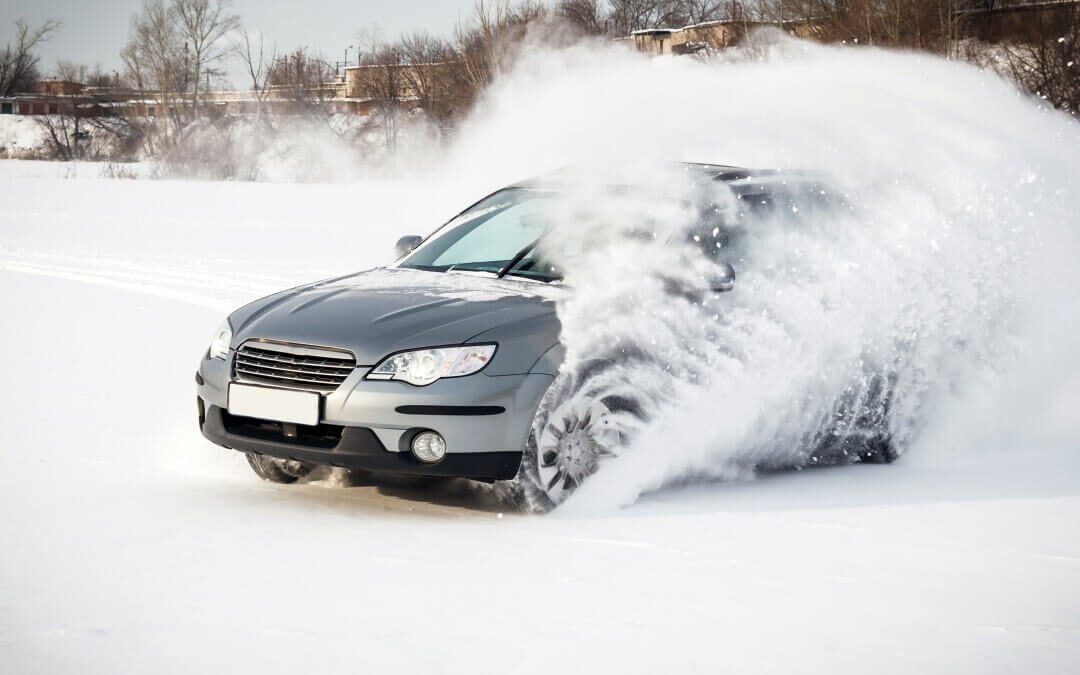It’s critical to have winter tires installed on your vehicle this time of year. While the major roads across Caledon, Mississauga, Brampton, Toronto, Vaughan and Georgetown are cleared pretty quickly, side streets, on and off ramps along highways and other areas are still snow covered after a storm and all-season tires just don’t cut it in those kinds of conditions.
Winter tires are no longer the big, bulky type that looked like they were made for a military vehicle in Russia. Nowadays, they’re sleeker with new, deep tread patterns and rubber compounds that make them quiet, effective in snowy terrain and appropriate for all kinds of vehicles. But there’s more to winter driving safety that having good, deep treads to get through the snow!
How pumped are your tires?
Did you know that tires lose a pound of pressure for every 10 degree drop in the temperature? It’s imperative your tires have the right amount of air pressure since an underinflated tire won’t push through the snow and give the kind of grip to the pavement you need and that can mean a very slippery and dangerous ride for you, your passengers and other motorists on the road.
Combat salt erosion with a premium car wash and wax
We’ve all seen cars driving around in the winter with that unsightly white, grey or brown hue to them, all thanks to the unattractive mix of road salt and sand, dried snow and slush and car exhaust pollution. It ruins the look of all vehicles and can even be damaging to the body and metal parts of cars because salt is corrosive. The salt and sand used on the roads can also be an abrasive that can ruin your paint job. The good thing is that it can all be washed away! Soft foam technology and a fresh water rinse can do miracles for the look and maintenance of your vehicle. A hand dry afterward ensures no streaks or water spots remain. Follow that up with a triple poly shine wax to provide a layer of protection to your paint job.
It’s also critical to note that a professional car wash will include your headlights and tail lights being cleaned and waxed. You may not think that’s very important but considering how overcast the weather can be and how the days are shorter and nights longer, you’ll be driving in dim light at best for a lot of the winter. It just makes sense to keep your exterior lighting instruments clean and clear from debris and the salty haze that clings to vehicles this time of year.
Protect the inside of your vehicle from effects of winter with interior detailing
All that salt on the outside your vehicle inevitably makes it into the inside of your car thanks to the bottom of your shoes or boots. While you may have rubber mats lining the floor of your vehicle, interior detailing is the best way to prevent salt, sand and moisture from getting trapped between the mat and carpeting, which can eventually lead to rust formation and serious erosion problems on the undercarriage. Interior detailing involves a thorough vacuuming of all the upholstery in your vehicle along with cleaning of the mats, dashboard, trim and all other surfaces inside your car.
Inspect your windshield and wiper blades
Your windscreen is of vital importance to your vehicle. It helps maintain the structure of your car and also protects you from the elements, which is quite handy when it’s snowing and minus 15 degrees outside. Because the windshield plays such a big role in safe driving, quickly addressing any little chips or nicks in the glass is crucial as they can quickly and easily grow to become large cracks that require a full on replacement as opposed to a quick and inexpensive repair job. It’s also important to know that it doesn’t take much for a crack to expand. A few centimetres of heavy, wet snowfall on the windshield can put enough pressure to cause damage.
It’s not something motorists think of all that often but it’s worth remembering to check your wiper blades. They usually last for about a year and it’s a good idea to get the more modern beam blade style wipers, especially during the long winter months because of one important design element: they don’t have an external spring which in traditional blades has been known to freeze up in cold temperatures.


